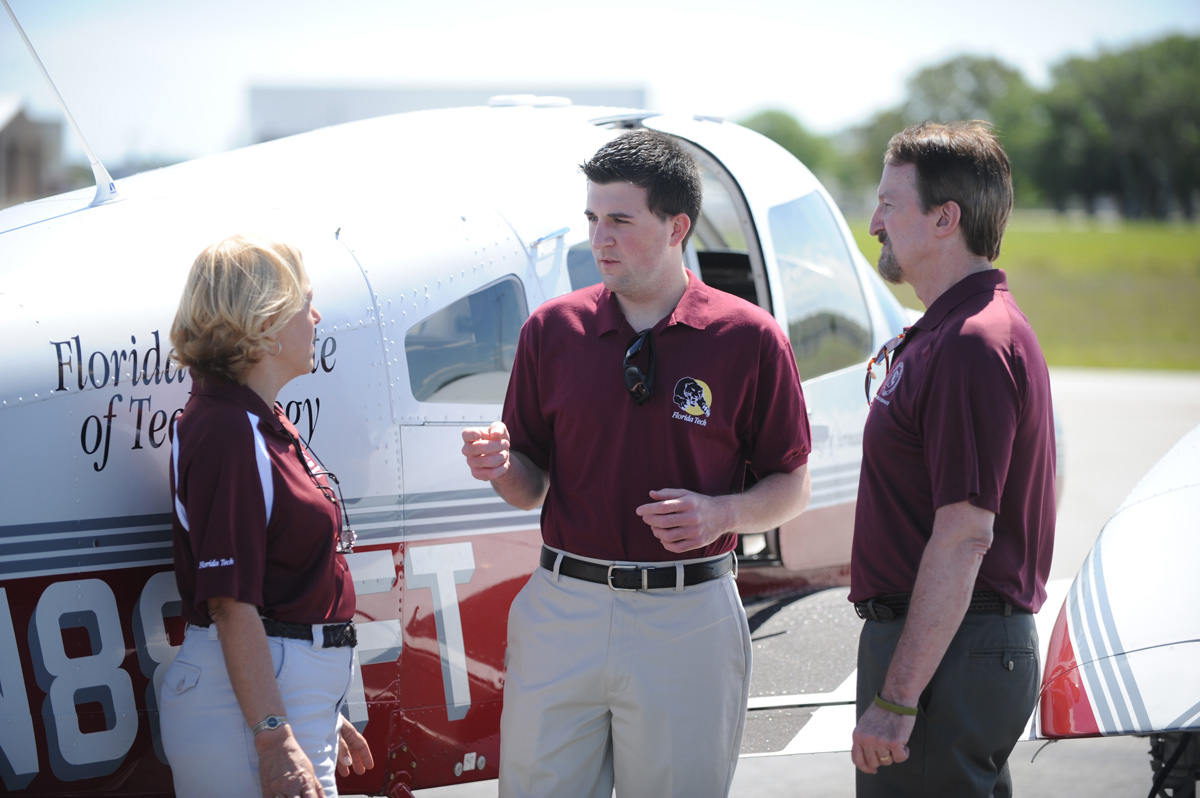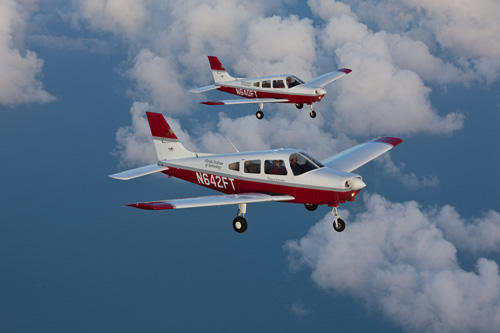Top 7 Questions to ask on a Flight School Tour
You’ve diligently researched a flight school and now you’ve taken the next step and booked a tour. But before you go, you want to make sure you use the opportunity to ask the right questions. The industry is full of acronyms and jargon that you’ve probably never heard before and it might feel like a part-time job just to select your flight school. Here is my advice to help you navigate the process of finding the right flight school for you.
1.Maintenance
For me when I started flight school, my parents were a bit apprehensive about the quality of aircraft that I would be training in. When you tour a flight school it’s important to ask to see the maintenance facility. This can tell you a lot more than you would think about the flight school itself. If you see piles of scraps, dirty floors, and sloppy looking mechanics, then it’s time to look elsewhere. What you should see when you walk in to a maintenance facility is a spotless floor, well organized tool areas and mechanics, a records room, and friendly staff that are willing to show you around. Your safety is the number one concern in flight training and therefore should be taken seriously by those providing you with the aircraft you are trusting your life with.
2. Campus Life
All college degree programs with a flight program are generally based on a campus somewhere. This can be a huge part of your training without you even realizing it. If you are unhappy on campus, doing nothing but flight training 24/7, and having no work/life balance, it can be very easy to get burned out. It is important to like and feel comfortable with your campus. Ask about Greek life, student organizations, and other majors on campus, and then get involved. Flight school can be an extremely stressful environment so having an outlet to decompress and connect with people is more important than you may think.
3. 141 vs 61
The FAA regulates flight training under two main sections, Part 61 and Part 141. The main difference between the two is how structured the training is. A good way to think about it is that part 61 is more casual – it’s a one on one, go at your own pace kind of learning, which benefits those that like to study on their own or at their own pace. Part 141 provides detailed lesson plans for each flight in order to reach the minimum requirements, better for those that like the rigor and detail of learning. Most collegiate programs will be primarily 141 based, but will often offer part 61 as an option. Because those lesson plans are all written out, ask the aviation school to see them. Take the opportunity to learn what your lessons are going to be like. Some things to look out for are lots of repetition within lessons, most will start and end with the same kinds of formats but take a look at the middle sections of the lessons and make sure they are a little different each time.
4. Restricted Airline Transport Pilot License
The race to get into a regional airliner is continually changing. The restricted Airline Transport Pilot License (ATP ) is helping students and young aviators who have gone through a 141 flight training program from an accredited university, get into the right seat of a regional airline in 1,000 or 1,250 hours, instead of the traditional 1,500 hours. In some cases, this could mean six months to a year sooner. If the school you are looking at does not offer the restricted ATP, then they may not be working as hard as they can for you. Take this into consideration because this may put you behind others in the industry. There are also a few other detailed minimum requirements that you should discuss with your advisors or other points of contact.
A flight school could have the best aircraft, staff, and maintenance in the world, but if they do not have beneficial weather, then none of that will matter. The majority of primary flight training has to be done in visual conditions, so it is important to consider the location and weather conditions in the flight training area when choosing a flight school that is right for you. This can become a huge area of frustration for new students because they may often have to cancel or delay flights due to weather. In some northern locations, it is possible to go a month or more without being able to fly. Ask in your department meeting about how much flying students typically do month to month.
6. Coming in with Licenses
Incoming flight students are able to get their Private Pilot Certificate before they enroll in college. In most cases, as long as your license is completed, even if you only have the paper copy, your college will accept the certificate, and even issue you transfer credits. However, if you come in with half, or only part of your license completed, without fail, you will run into problems. This gets complicated because there is no way for you to prove what you have done in your training other than the word of your previous instructor, and your logbook. What will happen more often than not is that you will have to prove your proficiency with an instructor. This can be a source of frustration on many levels for a student. You will be repeating lessons that you may have already done, spending more money and time on those same lessons that could have been used to move forward in your training. Take this into consideration before starting your search, and make sure you have enough time to complete your license before you start. As a rule of thumb always plan an extra month or so for a buffer. Remember, having your license in hand when you start college is ALWAYS beneficial.
7. Hiring from Within
Once you get through your primary training, you will have accumulated roughly 250-300 hours. To get to the 1,000-hour minimum for the restricted ATP, it’s common for students to work as Certified Flight Instructors (CFI). By no means is being a CFI an easy task. When you are on your tour, it is a good idea to ask about the policy of hiring flight instructors that have gone thru the same schools’ flight program. In some cases, flight schools encourage it, and others they do not. This could really hold you back from accelerating as quickly as possible. Ask about your options for working as a CFI after you have the license, as well as any education benefits, such as tuition remission for full-time employees (often times full-time CFI are still considered college employees, and thus qualify for free tuition, up to a set limit).
If you have questions, ask! Us pilots tend to lose sight of that fact. Remember, we all started in the same place, so don’t be scared to ask them to slow down once in a while.
%CODE1BECOMINGAPILOT%






